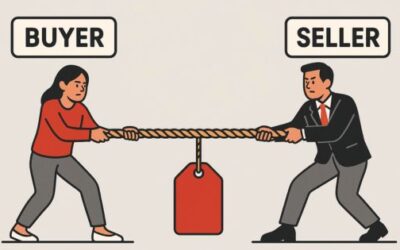Sales training is the process of improving how reps execute in live sales situations. It focuses on building the skills required to run effective discovery, qualify opportunities accurately, and close deals with confidence. Training is only effective when it changes behavior across the pipeline.
Most programs fail to deliver lasting impact (70% of information learned in a training is forgotten in a week, 87% in a month according to Gartner). Reps attend sessions, complete certifications, and return to their old habits within weeks. Training often lacks connection to real opportunities, clear standards for application, and ongoing reinforcement from managers.
This article explains how to structure sales training for execution. It outlines the components needed to drive behavior change, how to align managers to reinforce skills, and how to measure whether training is improving key sales KPIs like win rates, deal size, and sales cycle length.
Key Takeaways
- Sales training must improve execution in live sales situations
- A defined methodology is required to guide discovery, qualification, and deal progression
- Structured learning environments support consistency and skill development
- Certification validates application and enables performance tracking
- Sales managers must be equipped to observe, coach, and reinforce critical behaviors
- Training impact should be measured through win rate, deal size, sales cycle length, and quota attainment

Hear Directly From 1,200 Buyers on What Works and What Doesn’t
Buyers are tired of seller-driven agendas and empty discovery questions. This report shows what they say works across outreach, discovery, and demos.
Identify Gaps in Your Current Training
Start by evaluating whether training is driving measurable outcomes. This is the first step to assessing the effectiveness of past programs regardless of how confident or engaged your reps may appear. If close rates are flat or declining, sales cycles remain unchanged, or pipeline generation is stagnant, the training is not improving execution.
Look for these indicators:
- Win rates are not increasing
- Deal size is static or shrinking
- Sales cycle length is unchanged
- Pipeline generation is inconsistent or low
- Deal velocity is not improving
- Quota attainment is flat at the team and rep level
Effective training produces movement across these metrics. If performance is stuck, the training isn’t being applied or it wasn’t built to support execution in the first place.
Define a Clear Sales Methodology
Sales training must be grounded in a defined methodology. Without one, reps receive fragmented guidance and inconsistent coaching. A documented methodology creates the structure that training and execution rely on.
The methodology should outline:
- How discovery is conducted
- What qualifies an opportunity
- What buyer information must be captured
- How to assess deal health
- How to define next steps and progress deals
Every training session, certification, and deal review should map back to this framework. If reps and managers are operating from different expectations, training will not produce consistent results.
The methodology becomes the foundation for measurement, coaching, and forecasting. Without it, training cannot scale or sustain impact.
Build a Structured Learning Environment
A structured learning environment provides the infrastructure for effective training. It centralizes resources, reinforces consistency, and gives reps a clear path for skill development.
The environment should include:
- A defined curriculum tied to your sales methodology
- On-demand access to learning materials
- Roleplay exercises based on real selling scenarios
- Assessment checkpoints to validate understanding
Training must reflect the sales process your team is expected to follow. Content should focus on the skills required to manage real opportunities, not generic sales tips.
The environment should also enable repetition. Reps need the ability to revisit content, practice specific skills, and receive feedback based on observed behavior. This builds long-term retention and reinforces application in the field.
If your team cannot point to a centralized system that supports ongoing development, they do not have a real training program—they have an event.

Upgrade Your Deal Review Process
A structured framework for teams facing unexpected revenue drops, slipping win rates, or declining forecast accuracy.
Implement Certification and Accountability
Certification confirms that reps can apply the skills required to execute in real deals. It creates a measurable standard and gives leaders a reliable way to track training adoption.
An effective certification process includes:
- Assessments based on deal execution
- Evaluations through roleplays or recorded calls
- Defined criteria for passing tied to your methodology
- Recertification checkpoints to maintain consistency
Certification should reflect actual selling conditions. Reps must demonstrate they can qualify opportunities, conduct discovery, and document buyer input according to the defined standards.
Tracking certification status helps identify performance gaps and coaching priorities. It also ensures that training is connected to observable behavior, not just content completion.
Align Sales Managers to Reinforce Training
Sales managers are responsible for making sure training is applied in live opportunities. Without manager reinforcement, even well-designed programs will fail to drive consistent execution.
Managers need clear expectations. They must know which skills to inspect, how to evaluate them, and when to intervene. This requires a shared understanding of the training content, the sales methodology, and the criteria used to define successful execution.
Support managers with:
- A checklist of observable behaviors to monitor in calls and pipeline reviews
- Standardized coaching frameworks tied to certification and methodology
- Training on how to deliver skill-based feedback and identify execution gaps
Managers should use live deals, call recordings, and opportunity reviews as primary coaching tools. The focus should be on confirming skill application, not reviewing pipeline status or activity metrics.
When managers are aligned to the training system and actively reinforcing it, behavior change becomes consistent across the team.
Measure the Impact of Training
Training must produce measurable performance gains. If outcomes do not change, the program needs to be reevaluated. The most effective way to track impact is by monitoring how skill adoption influences core sales metrics.
Focus on these indicators:
- Win rate improvement over time
- Increase in average deal size
- Reduction in sales cycle length
- Higher quota attainment by team and individual
These metrics reflect whether reps are applying what they’ve learned. Incomplete or declining performance signals a gap in training effectiveness or manager reinforcement.
Review these indicators monthly and tie them directly to certification data, call reviews, and pipeline inspection results. Training must lead to execution. Metrics confirm whether that execution is happening.
Conclusion
Effective sales training drives execution across the sales process. It equips reps to manage real opportunities and gives managers a clear structure for reinforcement.
A complete program includes a defined methodology, a structured learning environment, and a certification process based on observable behavior. It should lead to measurable improvements in performance metrics such as win rate, deal size, and sales cycle length.
Training should be built to improve execution, reinforce critical skills, and support consistent sales performance at scale.
Additional reading: How to chose a sales training program



0 Comments